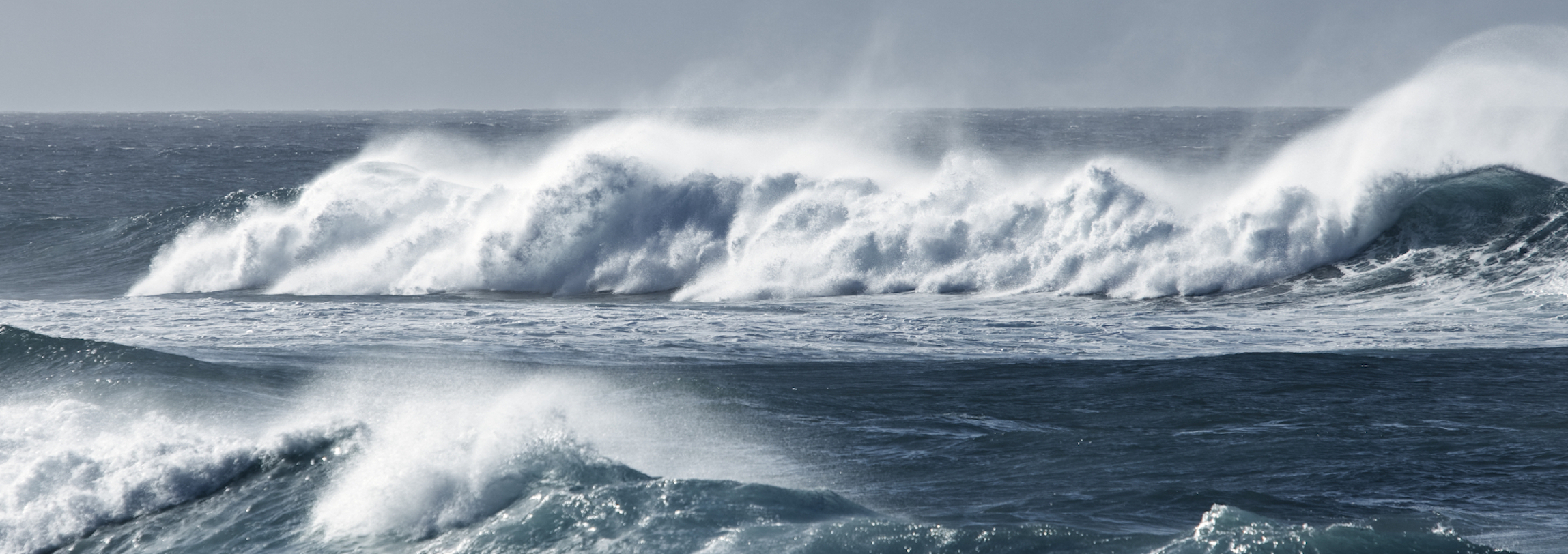Climate change and global warming presents an uncertain future, even with immediate reduction in emissions. Significant research has been undertaken by various public institutions on the effect global warming will have on the world’s oceans, and in particular wave climate.
This article is the first in a series of three reviewing different IPCC climate predictions in the context of the offshore industry operations.
We explore the changes predicted for ambient and extreme wave conditions around Australia. This line of analysis enables us to consider what the impact may be due to climate change, and what changes this will entail for the design environments of both existing offshore assets and new facilities.
The effect of climate change is often discussed in the context of a change of temperature, and the immediate effects that will occur because of that change, for example the expected sea level rise directly resulting from the melting of the polar ice caps. Rising temperatures and changes in the atmosphere also affect global wind patterns; in turn directly affecting the wave conditions and surface ocean currents on local and global scales. In offshore design, wind and wave descriptors are collectively termed the metocean conditions for a site. These metocean conditions drive the forces that offshore structure is design to withstand. Understanding these forces, and how often large design significant weather events occur, is paramount for the safe design and construction of any offshore facility.
Good engineering practice has all design conditions presented in a Metocean Basis of Design. These design conditions are generated from detailed atmospheric, wave and ocean current models, often calibrated with in-field measurements. Typically however, a Metocean Basis of Design often does not consider how these conditions may change over the life of a field. This is an important shortcoming given that some facilities have design lives in excess of 50 years.
AMOG has undertaken an extreme value analysis of sea state across a wide variety of climate change scenarios. In this particular example, we have chosen to look at the broad locations being discussed for proposed offshore wind turbine farms around Australia. For this analysis:
- Comparison was made from the baseline current conditions to a mid-21st century prediction
- forecast for 2026-2045
- model assumption of emissions matching the RCP4.5 scenario, modelling global warming of up to 1.4oC by mid 21st century, and 2.0oC by end 21st century.
- Each coupled model and climate change scenario demonstrates a different prediction
- A detailed study for a specific location under different models is noted and recommended.
While the spatial and temporal resolution of the global models run for the various climate change scenarios reviewed would not be appropriate for an actual design basis, studying how these design wave conditions change between different scenarios can give us a strong indication of how risk may change to offshore assets, due to climate change
Some notable findings for analysis of non-cyclonic conditions included:
- For this climate model and the RCP 4.5 climate change scenario, ambient conditions around Australia do not see large changes between present conditions and the forecast conditions for the mid-21st century. Ambient conditions mildly decreased on the east and west coasts or Australia and northern Tasmania, and saw mild increases around Kangaroo Island. (Figure 1)
- In regions with planned offshore wind sites, forecast predicted maximal conditions were similar to present values, but varied on both sides. (Figure 2)
- The mid-21st century predicted expected wave heights of extreme wave events at the investigated locations saw variance from present values, with some sites increasing and some decreasing. Trends are not between different locations, and analysis is required individually on a site by site basis. Similarly, consideration of applied climate change model is required. (Figure 3)
As we can see from this study, the change in design conditions due to climate change is varied when considering different scenarios, locations and time horizons. As such, investigation of extreme wave distributions expected over the lifetime of an offshore facility or asset is an important step in verification of suitability of the design specification. Site specific analysis using coupled climate forecast model allows for the consideration of climate change to be assessed and estimated over the expected life of the project.
AMOG’s next post will present a case study demonstrating the impact of change metocean conditions, as a result of climate change, on an offshore decommissioning/construction operation. A final post will detail a case study of SPM export facilities optimisation with a view to mid-late life production and climate change considerations.
* Disclaimer – This blog post was written prior to the IPCC6 models being released, as such, for a detailed assessment it is recommended using the latest scenarios generated for future usage cases.







